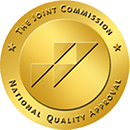Treatment for PTSD does not focus on curing the disorder. Like other mental health disorders, PTSD is not considered curable in the classic sense. Instead, treatment focuses on alleviating symptoms and helping people process the trauma they experienced. Given time, treatment may even eliminate some symptoms stemming from PTSD. Most of the time, PTSD therapy programs combine medication, therapy, and alternative approaches to produce the best outcomes. Each component of treatment is fleshed out more below.
Medications used to treat mood and anxiety disorders can also be leveraged in treating PTSD. SSRIs are an excellent example of this. Zoloft and Paxil are two types of SSRIs that are FDA-approved for treating PTSD. They support symptom reduction and quality of life by targeting anxiety, depression, sleep issues, and more.
Cognitive processing therapy and eye movement desensitization and reprocessing (EMDR) therapy are two forms of therapy that see the wide application in the treatment of PTSD. Cognitive processing therapy focuses on how people see their trauma and choose to cope with it. Sessions help people work through elements of their trauma that have them stuck.
EMDR therapy is a technique that uses eye movements and sensory input to aid people in processing memories, thoughts, or emotions related to their trauma. This therapy is built on the premise that trauma can freeze the brain, keeping it stuck in a loop of never getting beyond the trauma or being able to process what happened.




